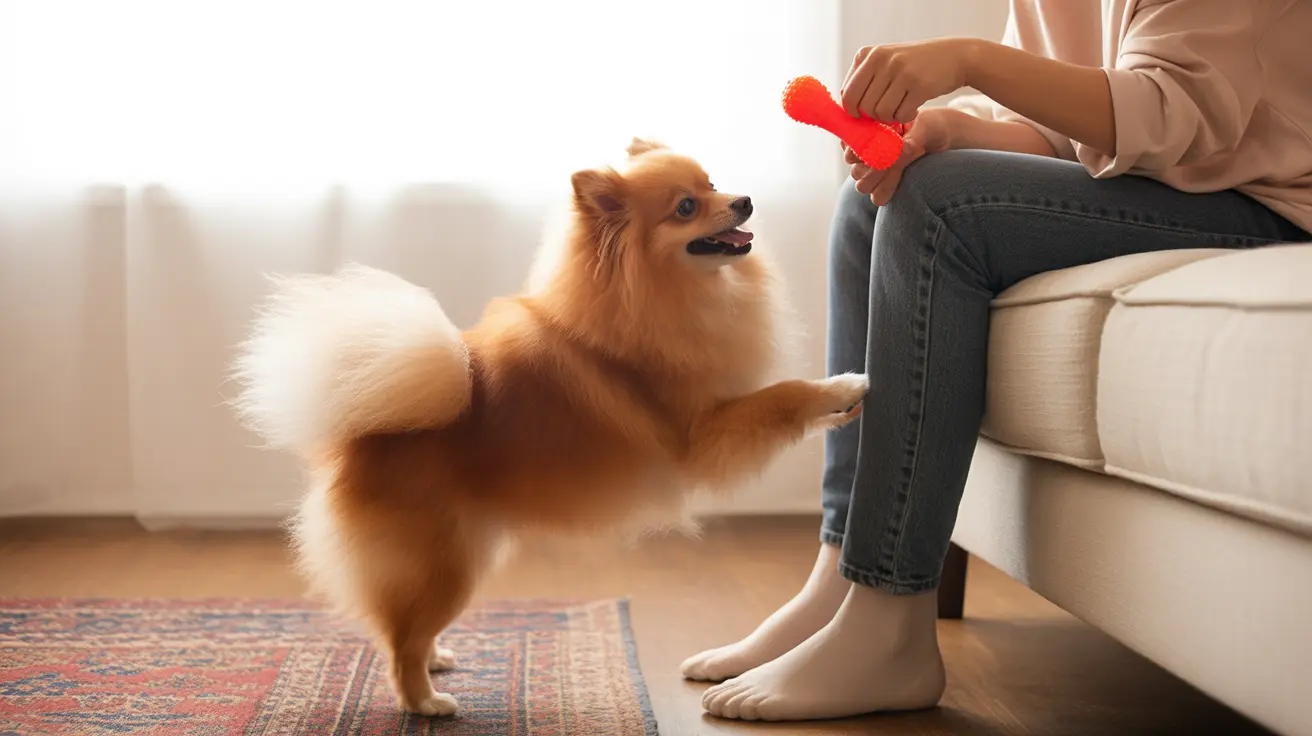The Science Behind Dog Humping Behavior
Dogs have exhibited mounting behaviors throughout their evolutionary history, using it as a form of communication, stress relief, and social interaction. This instinctive behavior can begin as early as 3-6 weeks of age, long before sexual maturity.
Research shows that both male and female dogs engage in mounting behaviors, regardless of whether they've been spayed or neutered, indicating that the behavior serves multiple purposes beyond reproduction.
Common Triggers for Leg Humping
Excitement and Overstimulation
Many dogs mount legs when they become overly excited, such as during greetings or play sessions. This behavior serves as a way to release excess energy and emotion, similar to how some dogs might spin in circles or bark when excited.
Stress and Anxiety
Dogs often use mounting as a coping mechanism when feeling anxious or stressed. Common triggers include changes in routine, unfamiliar environments, or the presence of new people or pets in their space.
Medical Causes and Health Concerns
Sometimes, leg humping can indicate underlying health issues that require veterinary attention. These may include:
- Urinary tract infections
- Skin allergies or irritation
- Hormonal imbalances
- Prostate problems in male dogs
Any sudden increase in mounting behavior should be evaluated by a veterinarian to rule out medical causes.
Training and Prevention Strategies
Positive Reinforcement Techniques
The most effective way to address unwanted humping behavior is through positive reinforcement training. This includes:
- Redirecting attention to appropriate activities
- Rewarding calm behavior
- Teaching alternative commands like "leave it" or "go to your bed"
Environmental Management
Creating an environment that reduces triggering situations can help prevent mounting behavior:
- Providing adequate exercise and mental stimulation
- Maintaining consistent daily routines
- Managing exposure to overwhelming situations
When to Seek Professional Help
Consider consulting a professional dog trainer or behaviorist if:
- The behavior becomes compulsive
- Traditional training methods aren't working
- The dog shows signs of anxiety or stress
- The mounting behavior is causing social problems
Frequently Asked Questions
Why does my dog hump my leg even when they are neutered or spayed?
Neutered or spayed dogs may continue humping because the behavior isn't solely driven by hormones. It can be related to excitement, stress, or learned behavior patterns that developed before the surgery.
How can I tell if my dog is humping due to stress or excitement rather than sexual reasons?
Look for other behavioral cues: If the dog shows signs of anxiety (panting, pacing, avoiding eye contact) or excitement (playful body language, wagging tail) alongside the humping, these indicate the underlying cause.
What are effective ways to stop my dog from humping my legs without punishing them?
Use positive reinforcement by redirecting their attention to appropriate activities, teaching alternative behaviors, and rewarding calm conduct. Consistency and patience are key to success.
Can medical issues cause dogs to hump my leg, and when should I see a vet?
Yes, medical issues like UTIs, skin irritation, or hormonal problems can cause increased humping. Consult a vet if the behavior appears suddenly, is excessive, or is accompanied by other symptoms like excessive licking or changes in urination.
Is humping a sign of dominance, and how common is it for dogs to hump for social reasons?
While humping was once thought to be primarily about dominance, modern behavioral science shows it's more commonly related to excitement, stress, or attention-seeking behavior. True dominance-related humping is relatively rare, especially toward humans.
Understanding why dogs hump legs is the first step in addressing this behavior effectively. With patience, consistent training, and appropriate medical care when needed, most dogs can learn more appropriate ways to express themselves and interact with their human family members.






